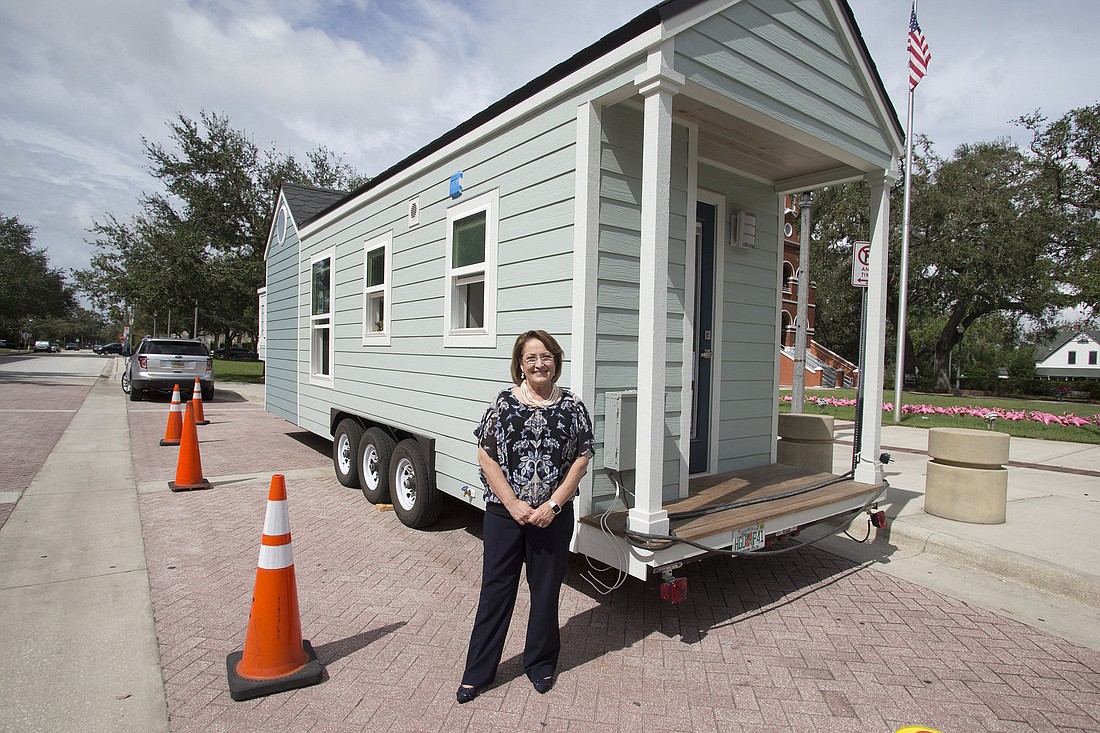- April 24, 2024
-
-
Loading

Loading

ORANGE COUNTY – As many may know through firsthand experience, finding an affordable home is a daunting task in highly populated areas.
And Orange County is one of them, which is why Orange County Mayor Teresa Jacobs launched a regional affordable housing initiative in October 2016 featuring a series of workshops with architects and experts from local universities to inform policymakers on how to steer the private sector toward more affordable housing.
“From accessory dwelling units to innovative design, as well as the use of imaginative products and building concepts, we have the chance to make a real impact by creating a marketplace with a variety of high-quality affordable housing options,” Jacobs said. “And in keeping with our commitment to collaboration, we’re working with partners from throughout the state and region to bring forth a set of policies that will guide a regional approach to creating communities with a variety of housing types and incomes.”
IN DEMAND
Jacobs said the housing problem has intensified since the end of the recession. According to City-data.com, in 2016, the mean price for a detached single-family home was $287,901, and in November 2017, the average rent for an apartment in Orlando was $1,363, according to rentjungle.com, which collects rental data for about 80% of all listings in the country.
Mitchell Glasser, the manager of the Orange County Housing and Community Development Program, said the most significant challenge in tackling the situation in Orange County and surrounding Central Florida counties boils down to demand versus supply.
“The biggest challenge is not that we don’t know how to create affordable housing,” Glasser said. “I think the biggest challenge is that the demand so far exceeds our supply, especially on our rental side, that it’s hard for us to compete in this environment when people can build market-rate apartments and pretty much charge a premium price. Those forces are difficult to counter when you try to encourage someone to build affordable.
“On the homeownership side, before the recession, we had a certain number of developers that specialized in building affordable housing,” he said. “But after the recession, the market came back and now the only ones we have that are consistently trying to build affordable are nonprofits. So trying to get the private sector back into the game of building affordable is a challenge.”
FINDING A SOLUTION
But to counter those market forces, Orange County is hoping to use certain incentives to encourage developers to construct a greater variety of housing types catered to low-income families.
“We’ve been talking about different mechanisms that governments in other areas of the country use to encourage affordable housing or to encourage developments to include a certain number of their units as affordable,” Glasser said.
The county is considering everything from the use of community land trusts, subsidies for developments that build affordable units, and other financial and regulatory incentives.
The objective is to sort out what strategy will work best in each county and identify which are the most suitable areas that are near public transportation, jobs, schools and services.
“Say you’re building near a transportation corridor like SunRail, a regulatory incentive would be to allow less parking spaces because the development is near transportation, meaning a family might not need to have two cars because someone might be using mass transit more,” he said. “So if you’re building near areas where there are good transportation and jobs, maybe there could be some flexibility in parking requirements.”
A financial incentive could involve density bonuses, which would offset a developer’s overall construction costs assuming they build a certain percentage of units designed for low-income families. Another possible incentive could take the form of a subsidy of the required impact fees if the developer builds single-family homes ranging between $160,00 to $210,000 or rental units that cost around $675 a month for a one-bedroom unit or about $750 for a two-bedroom.
Also under possible consideration for inclusion in the county’s future policy recommendations are what have been termed “inclusionary zoning ordinances,” which Glasser said has grown more popular within other highly populated and expensive areas.
“We’re also looking at inclusionary zoning ordinances, where you require all developers to build a certain percentage of affordable units,” he said. “They are usually done in more expensive areas of the state, but we’re starting to see that pop up more in South Florida.”
THE ‘D’ WORD
Glasser is aware some of the policy solutions under discussion require developments to increase residential density, despite strong concerns in Orange County regarding intense development. But Glasser emphasized that vibrant cities in the country all lean toward dense development with smart design.
“Go to any vibrant city in the United States, even in Florida, and you’ll notice the trend is to move back into the cities and be near transportation,” he said. “Density is not necessarily a bad word. Good design and good layouts of communities can make an area very vibrant. I think one of the main purposes of this is to try and get our community and the private sector to develop more variety of housing types to offer more housing options.”
Jacobs has since hosted two workshops on the issue, with an upcoming third workshop later this year focused on strategies to increase affordable housing in the Central Florida region. The end goal is to use the knowledge to create better policy.
“Once we’re finished drafting a set of policy recommendations, rather than stick it on a shelf and let it collect dust, we’ll work on both short-term and long-term objectives — whether it be changes to the land development codes, the creation of certain programs, or the use of advocacy and outreach initiatives, we’ll implement the policies,” he said.